Tag Archives: Gulf of Maine

Governor Mills Urges Commerce Secretary Ross to Reject Pew Charitable Trusts prohibition petition
Standing up for Maine’s vital lobster industry and its hardworking men and women, Governor Janet Mills today urged U.S. Secretary of Commerce Wilbur Ross to deny a petition by Pew Charitable Trusts that would prohibit the use of vertical lines in the American lobster and Jonah crab fisheries in four areas of the New England coast. In a letter sent to the Commerce Secretary yesterday, Governor Mills explained that the petition, which asks for immediate year-round closures south of Martha’s Vineyard and Nantucket and three seasonal offshore closures in the Gulf of Maine to protect North Atlantic right whales, “not only fails to provide additional protections for right whales, but contrary to Pew’s assertions, it will also cause significant economic impact to Maine’s iconic lobster fishery.” >click to read< 17:03

Judge James Boasberg’s court ruling puts future of Maine lobster industry at risk
United States District Judge James Boasberg’s order found that the National Marine and Fishery Services violated the Endangered Species Act by licensing the lobster fishery. In the second phase of the case, the judge will decide what action is necessary to rectify the situation. The Maine Lobstermen’s Association, an intervenor, and other industry stakeholders around the Gulf of Maine, will submit information for the judge to consider in his ruling.,, Activist Richard Strahan filed a motion in federal court in Bangor to stop fishing in Maine May 15, citing violations of the Endangered Species Act, Maine Public reported. The Maine Department of Marine Resources has no intention of curtailing lobster permits, said spokesperson Jeff Nichols. >click to read< 09:45

‘I’m not a quitter’: lobstermen turn to kelp farming in the face of climate crisis
Back from a day of scalloping, lobsterman Bob Baines has docked his boat, the FV Thrasher, at the Spruce Head Fishermans Co-op. His sternman, David McLellan, clad in waterproof overalls like Baines, shucks the last few hauls, tossing the meats into a bucket and the shells overboard. It’s the last week of scallop season, but there is a new venture on the horizon. Baines, 64, steers the Thrasher back out toward Hewett Island on Penobscot Bay to check on the underwater kelp farm that he “planted” in December. It’s a willowy structure made up of moorings, buoys and ropes that hovers 7ft underwater and spans 1,000ft wide, like a monster cat’s cradle. Baines is among the latest of 19 veteran lobstermen along the Maine coast who are applying their hard-earned expertise to kelp farming. >click to read< 12:46
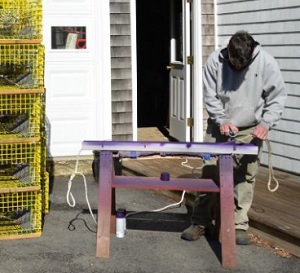
Maine lobstermen spray-paint trap lines for whale entanglement study
Stores up and down the coast special-ordered quantities of purple paint this winter in anticipation of a state-inspired data collection effort, spearheaded by the Maine Department of Marine Resources. With approximately 4,500 commercial lobstermen in the state setting up to 800 traps each, that is a lot of purple spray paint. For those who got a jump on the lobster season, the job was underway in late February, indoors, amidst fumes of acetone and toluene. For others, it has been an outdoor project, long and messy. But the lobstermen mostly agree that at least the state and National Oceanographic and Atmospheric Administration will gather definitive evidence indicating whose lines — U.S., Canadian, from Maine or other states — are entangling the endangered North Atlantic Right Whales in the Gulf of Maine and Atlantic Ocean. photos, >lick to read< 17:57
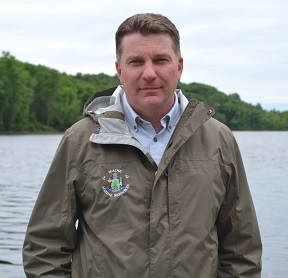
Maine Seeks to Aid Lobstermen as Federal Whale Protections Loom
On Friday, the state’s Department of Marine Resources released a plan it says protects the endangered whales and lobstermen, whom the feds say need to do more to prevent traps and lines from killing the whale. Maine’s suggestions include having lobstermen use ropes with weak points the whales could easily break and calls for a 25% reduction in the amount of vertical trap lines. >click to read< 08:29
Maine Plan Aims To Reduce Lobstering Impact On Right Whales – The Maine Department of Marine Resources tweaked its October proposal to balance the needs of lobstermen while protecting the whales,,, >click to read< 09:32

Former state rep calls on local officials to denounce offshore wind turbines in the Gulf of Maine
Gov. Chris Sununu has said the proposal has “tremendous potential.” Some local officials, like in Seabrook, have expressed concerns about their impact on wildlife, the fishing community and overall impact on Seacoast towns. Others in Hampton who oppose the wind turbines include commercial fisherman David Goethel, who fears the turbines will make it harder for the already struggling fishing industry to stay afloat. He said he is optimistic opponents of the turbines will have their voices heard. >click to read< 09:19
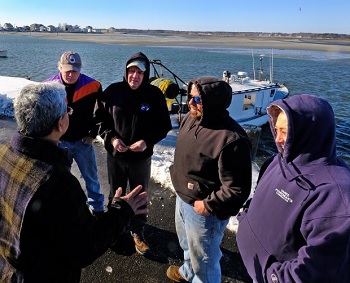
Seabrook: New Hampshire Fishermen deserve voice in offshore wind plans
Selectmen are abandoning a task force looking at offshore wind turbines in the Gulf of Maine, demanding their local fishermen have more direct inclusion.,, Fishing communities like in Seabrook have expressed strong concerns about the turbines’ impact on the ocean and the fish they harvest for a living.,, They said in their letter to the OSI they wanted fishermen to have a direct seat on the task force, which is comprised of elected officials from New Hampshire, Massachusetts and Maine. >click to read< 18:08

New England Fishing Communities Being Destroyed by ‘Climate Shocks’: Study
The climate crisis is hurting the New England fishing industry, claims a new report published Monday, with a decline of 16% in fishing jobs in the northeastern U.S. region from 1996 to 2017 and more instability ahead. University of Delaware researcher Kimberly Oremus’ paper, “Climate variability reduces employment in New England fisheries,” was published in the Proceedings of the National Academy of Sciences. >click to read< 10:28
New England fishermen losing jobs due to climate: study – While other studies have used temperature projections as a proxy for climate change, Oremus chose the North Atlantic Oscillation, a climate index based on the difference in sea-surface pressure between two points in the Atlantic Ocean—at the Azores and near Iceland. >click to read<

Plymouth-based Manomet Inc. tests hard-shell clams for replenishing Gulf of Maine fisheries
When Maine’s shellfish farmers had questions, they turned to Manomet Inc. for answers. The environmental science organization in Plymouth is helping the industry find solutions to predation problems plaguing soft-shell clams in coastal waters along the Gulf of Maine. Marissa McMahan, director of the Fisheries Division at Manomet, is working on a pilot program that may lead to the introduction of quahogs, a hardshell variety that is more resistant to predators, to deal with the changing conditions to the north. Photo’s, >click to read< 14:36

Second Maine lobstering group rejects state’s plan for protecting whales
The Maine Lobstermen’s Association staked out its position on the Maine Department of Marine Resources’ proposal with a board vote Thursday night. Director Patrice McCarron would not disclose the vote breakdown, calling that a private matter. The group did, however, release a statement about why it couldn’t support the plan. “It seeks reductions that exceed the documented risk posed by the Maine lobster fishery,” >click to read< 06:16

Update on Results and Progress of DMF Gulf of Maine Cod Industry-Based Survey & SMAST Video Trawl Survey
The Gulf of Maine (GOM) Cod Industry-Based Survey (IBS) has concluded three years of surveying, and the SMAST Pilot Video Trawl Survey of GOM cod on Stellwagen Bank has preliminary results. Some findings and implications of the combined results are presented here. Further analyses are underway and are described below as is discussion on the discard dilemma that continues to face the commercial industry while operating under extremely low catch limits for GOM cod. >click to read< 18:27
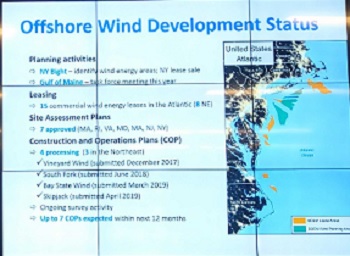
‘A Whole New Industry’: N.H. To Work With Neighboring States On Offshore Wind in Gulf of Maine
New Hampshire, Maine and Massachusetts will work together on large-scale offshore wind development in the Gulf of Maine. Stakeholders from the three states met today in Manchester talk about the possibilities and obstacles for that new industry. The event was hosted by the Environmental Business Council of New England at the state headquarters of Eversource, which is developing several large offshore wind projects elsewhere in the Northeast. >click to read< 14:06

Nova Scotia lobsters still in sweet spot despite climate change
Canadian scientists have attempted to predict the impact of a warming ocean caused by climate change on the lucrative Nova Scotia and New Brunswick lobster fishery on the Scotian Shelf. In most areas, lobster habitat in the offshore is expected to remain suitable or improve over the next few decades, according to a study published in the journal Frontiers of Marine Science. Offshore is defined as beyond 19 kilometres from land. “Some of the climate projections suggest that it may not have a big impact over the next number of years on adult lobsters,” >click to read< 08:49

Warming waters, local differences in oceanography affect Gulf of Maine lobster population
Two new studies published by University of Maine scientists are putting a long-standing survey of the American lobster’s earliest life stages to its most rigorous test yet as an early warning system for trends in New England’s iconic fishery. The studies point to the role of a warming ocean and local differences in oceanography in the rise and fall of lobster populations along the coast from southern New England to Atlantic Canada. >click to read< 12:36

You Can Learn A Lot by Towing Two Nets at Once
Scientists and fishermen boarded the F/V Karen Elizabeth on September 12 with a joint mission: conduct a study of the NOAA Ship Henry Bigelow’s trawl net used for the twice-yearly scientific survey of the Northeast shelf. The Karen Elizabeth can tow two nets at once, making it the perfect platform for examining net performance under different conditions. The study is focused on how the net performs at different spreads, and what differences in catch can be attributed to that spread. Photos, >click to read< 17:15

New study addresses changes in lobster molt timing, Gulf of Maine temperature shifts
Variation in lobster molt timing has been increasing in recent years, and is related to changing ocean temperatures in the Gulf of Maine,,, Creating a time series for lobster molts and outlining the relationship of the initial intra-annual molt season to bottom water temperatures in the Gulf of Maine is important to the lobster industry because shifts in water temperature could result in changes in timing of the molt season, led by then UMaine graduate student Kevin Staples, who was pursuing a dual master’s degree in marine biology and marine policy. >click to read< 09:45
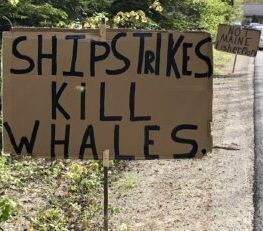
Lobstermen, environmentalists weigh in on right whale rules
Some of the largest and most powerful animal and environmental groups – including the Pew Charitable Trust, the U.S. Humane Society, the Conservation Law Foundation and Oceana – sent representatives to the hearing. They urged National Marine Fisheries Service to take immediate action to protect the whale, including proposals that even the team tasked by the fisheries service to come up with its whale protection plan had dismissed, such as offshore closures and ropeless lobster fishing. >click to read< 20:58

Changing climate boosts Maine lobster industry — for now
Maine’s lobster industry has found itself in something of a climate change sweet spot. The state’s coastal waters are still cold enough for lobster to thrive, but warming ocean temperatures are now encouraging them to settle here, mate and eventually shed their hard shells.,,, “Maine has enjoyed this abundant, expanding resource but everything that comes up must come down, and that is very related to climate change because that is very related to water temperature,” said Genevieve McDonald, a lobsterman and Stonington’s new representative in the Maine Legislature. >click to read< 16:44

Slow lobster season so far in Maine, but price is steady
It’s been a slow lobster season so far in Maine, but the lack of crustaceans isn’t translating into high prices for consumers, and fishermen are still hopeful for a bump in catch this summer.,,, The season so far is similar to the lobster hauls veteran fishermen saw in the 1980s and 1990s, when the boom in catch typically came later, said Steve Train, a lobsterman based in Long Island. It’s frustrating for those who are used to the big, early catches of the modern era, he said. >click to read< 15:11

SUNDAY! Lobstermen to rally in Stonington, Collins, Pingree, and Golden to speak
Maine’s top-grossing commercial fishing port will be the site of a rally this Sunday, July 21, as fishermen from across the state come together to bring attention to an issue that could affect the livelihood of lobstermen: pending National Oceanic and Atmospheric Administration regulations to reduce the number of vertical trap lines used by lobstermen in the Gulf of Maine. The rally will also be used to educate the public about the impact those regulations could have on Maine’s fishing fleet, said Captain Julie Eaton, a lobsterman who turned an idea into an event. “We have a voice and we need to use it now,” said Eaton. “There is big power when we come together and this is a chance for our politicians to hear our voice.” >click to read< 18:18
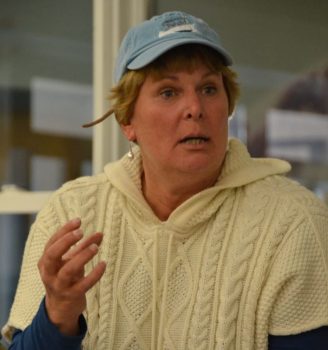
“It is official”!!! Lobstermen to rally in Stonington Sunday
Last week, Stonington lobsterman Julie Eaton, speaking for most members of her industry said just about the same thing in a posting on Facebook announcing plans for a rally on the Stonington Fish Pier at noon this Sunday., The rally is being called to protest a proposed NOAA Fisheries rule that would force Maine lobstermen to remove half their buoy lines from the Gulf of Maine to reduce the risk that endangered right whales might become entangled in the fishing gear. “It is official,” Eaton posted. “We are holding a Lobstermen’s Rally … on the Stonington Commercial Fish Pier.” >click to read< 15:22

Maine gets another 4.7 million pounds of pogy, or menhaden, but will likely need more bait fish
The state ordered its menhaden fleet to stop fishing on June 30 after officials concluded it had exceeded the state’s annual quota of 2.4 million pounds by 1.5 million pounds, the majority of which was landed in the last four days of June, according to state records. But menhaden, a schooling forage fish also called pogy, were still abundant in Maine waters from Kittery to Penobscot Bay, so Maine sought access to another 4.7 million pounds of quota that is set aside for New England states to share when they catch their limit but the fish remains in large numbers. >click to read< 10:10
From DMR, MENHADEN: Daily Reporting Required for the Episodic Fishery – The menhaden fishery will resume under the episodic event set aside (EESA) program. The quota for the EESA is 1% of the 216,000 mt coastwide TAC, which equates to approximately 4.7 million pounds. DMR has implemented emergency regulation to open the Episodic fishery on Monday, July 15, 2019. >click to read<

This discovery could be the key to managing New England’s cod population
Although the species is managed as a single population, cod in the Gulf of Maine can be divided into two genetically-distinct groups. And according to a new study, understanding the unique behavior and lifecycles of these two groups may be the key to creating a better management strategy. “The current stock assessments for Gulf of Maine cod assume that the population is one single, homogeneous unit,” Dean says. “All stock assessment models have to make gross oversimplifications. But sometimes those simplifications can create inaccuracies.” click to read<21:39

The best available science? – Backing lobstermen, Rep. Golden seeks to withhold funds for right whale protections
“The federal government is asking Maine lobstermen to make huge sacrifices without clear evidence that those sacrifices will have any positive impact on right whales,” Golden wrote in a statement Wednesday. “I’ve joined lobstermen to voice our concerns and now it’s time for action. Golden said it is important to help the right whale, but he joined the Maine lobster industry and Maine’s fishing managers in a common refrain: the federal government has no conclusive proof that right whales are getting hurt or killed by entanglement in Maine lobster gear. >click to read> 09:46

Multi-organization effort believes Cashes Ledge deserves to be permanently protected
The team’s efforts of four years ago, including holding roundtables and giving talks across the region, were undertaken in hopes Cashes Ledge would be awarded a monument designation. The effort failed, but it did play a part in the creation, three years ago, of the Northeast Canyons and Seamounts Marine National Monument, the only national monument in the Atlantic Ocean. Lamb, who now works with the Witman Lab and the Woods Hole Oceanographic Institute on various marine issues, believes Cashes Ledge deserves the same protection, especially since the Gulf of Maine is one of the fastest-warming bodies of salt water in the world. >click to read<09:37

Lobstermen tell regulators: Give us fewer buoy lines, but let us fish them how we want
Brian Tripp, a Sedgwick lobsterman, urged Maine to adopt a buoy line tagging system to help reduce the number of lines that link a fisherman’s buoys to his traps by 50 percent, which is what federal regulators say it will take to protect the endangered right whale from deadly entanglements. Under current state law, most Maine fishermen have a right to fish up to 800 of these surface-to-seabed lines. To meet the federal risk reduction goal, Maine can issue each fisherman 400 buoy line tags, Tripp said – half the number they are allowed to have now. Fishermen could live with that if they had the freedom to fish those 400 buoy lines how they want, he said. >click to read<11:21

New rules are meant to save whales; lobstermen wonder if they’ll survive
The state Department of Marine Resources has until September to come up with a way that it can cut the number of buoy lines in the Gulf of Maine by 50 percent. Federal regulators say that’s what it will take to reduce the risk of fatal entanglement enough for the species to survive. Scientists estimate only 411 right whales remain. The species has been on the brink of extinction before, most recently in 1992, when its population bottomed out at 295. It rebounded to about 500 in 2010, but low calving rates, ship strikes and fishing line entanglements have sent its numbers tumbling, yet again. But many in Maine’s $485 million industry worry it is the lobsterman who will face extinction,,, >click to read<10:28

How an invasive species or pig hide could solve Maine’s lobster bait crisis
Gulf of Maine lobstermen are casting around far and wide for new kinds of bait now that federal regulators have cut herring quotas by 70 percent. Possible solutions range from the mass importation of a nuisance fish from the Midwest, to manufactured baits, to pig hides. Fisheries managers estimate a 50-million pound “herring gap” in Maine over the next year. To help close it, they are turning to colleagues in Illinois. >click to read<09:33
From Carp to Pig-Hide: Bait Shortage Means Change for Lobsters’ Diet – (a lot more information in this article) >click to read<
















































